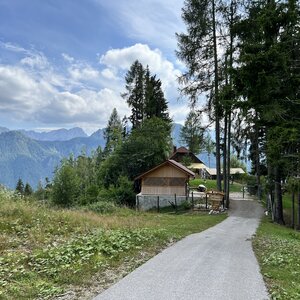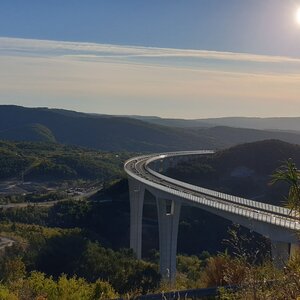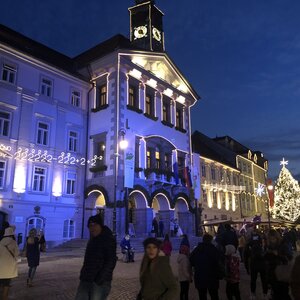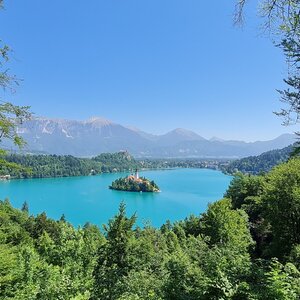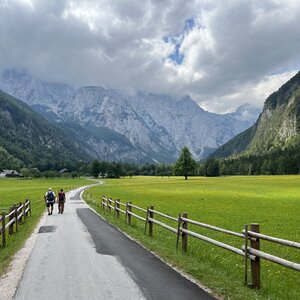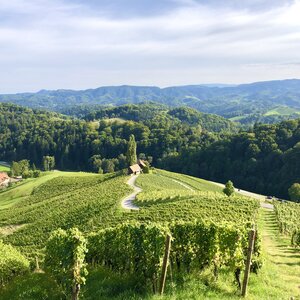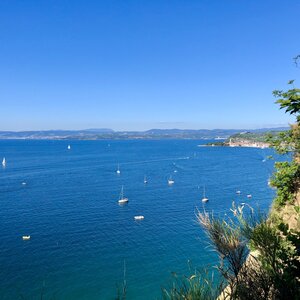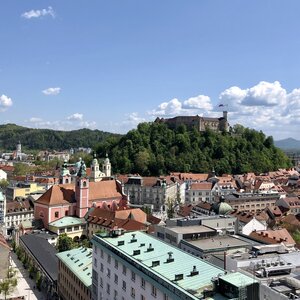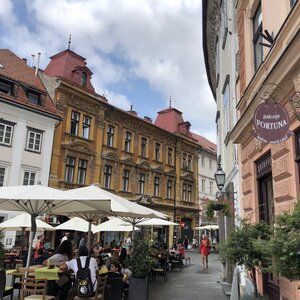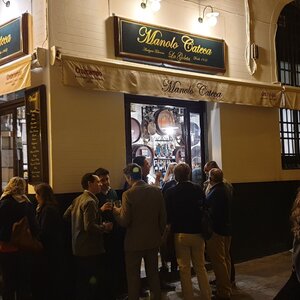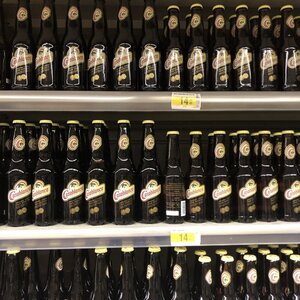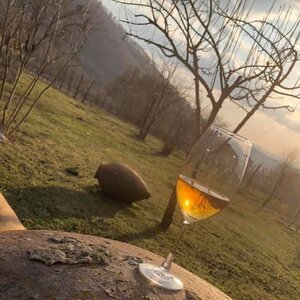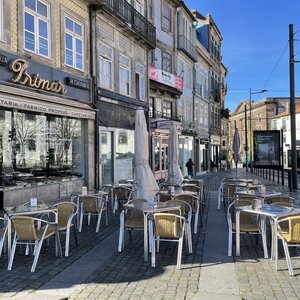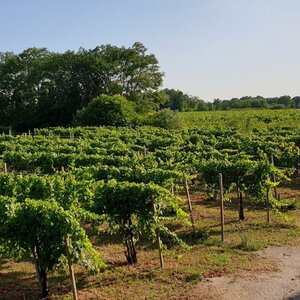The hills of Goriška Brda (Goriška Brda, or simply Brda — «hills») mark the border between the Italian and Slovenian ethnic groups. In these places, the Lombards defended themselves against the migration of Slavs from the east, and then the Slavs defended themselves against the Venetians and Turks. Many castles, fortresses and fortified villages sprang up on the hills. Schmartno is one of them: a village on a hill surrounded by walls and fortified with defense towers, first mentioned in 1317. The Venetians tried twice to capture Brda, but were defeated in both wars.

Despite the intense fighting of the First World War, Schmartno has retained elements of an old fortified Mediterranean village, for which it has been declared a cultural monument and is now being actively restored. Here you can walk through corridors along the walls like 16th century soldiers; peek into restored dwellings and see how the locals lived between the 16th and 20th centuries. The village has just one church, a couple of squares and three narrow streets — enough for a short, unexciting walk. But the surrounding area makes very good wine and cures meat, so I recommend planning a visit to the only Hiša Marica restaurant or wine bar overlooking the hills.
The name of the town comes from the name of St. Martin: Šmartno is its abbreviation in Slovenian. The main local church, the largest in Brda, is dedicated to the saint. The bell tower of the church together with the defensive towers of the town walls form the shape of the village, recognizable from afar, from all the surrounding hills.
The main occupation of the locals has been winemaking and fruit growing for centuries. This is what Schmartno and the neighboring villages are still doing today. It is worth coming here to relax in the silence of picturesque landscapes and to taste good Slovenian wine, which is so scarce that it doesn’t make it to the stores.

What to see in Schmartno
Hidden behind the village’s medieval walls, life is centered along three streets, the church and its prominent bell tower. The walls and towers are the main local attraction.
City walls
Historians believe that the Romans already had a settlement in this area. In the 16th century, a fortress with 7 towers was built on its base to protect it from the Venetians. There was a deep moat around the fortress and the main entrance had a folding bridge. The walls between the towers were passable and wide enough for soldiers to move in two directions.
Schmartno functioned as a border fortress until the middle of the 18th century. When the Venetian threat finally passed in the 19th century, the inhabitants began to change the character of the settlement to a more peaceful one. The towers and walls were converted into commercial and residential premises.





Church of St. Martin (Cerkev sv. Martina)
The bell tower of St. Martin’s Church was originally also a castle tower. The present church was added later, when the Venetian threat had passed, on the site of an earlier and smaller building.
The nave houses some of the last works of the 20th century Slovenian artist Tone Kralj — frescoes and paintings. In the bell tower hangs a bell from 1857 with the image of the Holy Three Kings, but tourists are not allowed to go up there.



Traditional Brda house (Briška hiša)
The only museum in Schmartno is a small, ethnographic one. In a house restored after an earthquake in 1978, locals gathered a collection of authentic objects traditional to the dwellings of the Brd region and opened a mini-museum in 2003.
It is an exact reconstruction of the original local dwelling: a simple house of 2 floors, with a fireplace. Everything is authentic except the floor, where the old partition was replaced by a reinforced concrete one. On the lower floor is the common room, which served as a workshop, a dining room and a place of daily life for the family. On the upper floor is the bedroom.
- Hours of operation are Monday through Friday from 9:00 a.m. to 5:00 p.m., Saturday, Sunday and holidays from 10:00 a.m. to 6:00 p.m.
- Admission is free.




Things to do in Schmartno
Goriška Brda is a place of gastronomic and enotourism. People come here not for culture and sights, but primarily for good wine. The region of Goriška Brda has always been agrarian. At the level of Slovenia, it is known for fruits, which are labeled as «from Gorišké Brda» — a sign of quality. It grows cherries, cherries, peaches; it produces high-level wine, which is produced in very small quantities; the region is less known for olive oil, lavender and meat delicacies.
Taste local products
For tasting the local cuisine I recommend a good restaurant Hiša Marica in an old restored manor house, which was named after grandmother Marica, who taught her grandchildren the local specialties. The grandchildren have grown up and created a restaurant with good local cuisine and a Bed & Breakfast, where you can stay overnight overlooking the quiet medieval village. The restaurant serves wine from Belica’s own winery and prschut (cured meat analogous to Italian prosciutto) aged for 3—4 years. I recommend trying their prschut and orange wine.


You can taste the different wines of the region in one place without lunch around the corner from the restaurant, in the Brda wine shop. And for olive oil tasting, there is a whole olive bar in the village called Oljčni bar. Wine and local specialties can also be bought at the tourist information center at the entrance to the village.


Buy lavender and olive oil cosmetics
At the far end of the village is the Nona Luisa store. This local producer makes natural soaps based on cold-pressed olive oil, natural herbs, local fruits, vegetables or wine. They have a farm near Schmartno, but it’s easier to check out their store in the village.

Walk to the observation tower
Walking in the hills among the vineyards is why locals from all over Slovenia come to Goriška Brda. And in places with beautiful panoramas in Slovenia you can often find observation towers — «Razgledni stolp». Razgledni stolp Gonjače, a 30-minute walk from Šmartno, is located on a hill above the village of Gonjače.
The walk takes half an hour one way. Along the way there are vineyards, pastures and the obligatory inn under the Gonjače pillar. There is also a parking lot, you can drive directly to the tower.
The tower with 144 steps is only 23 meters high and the climb is easy. At the foot of the tower is a monument to the victims of World War II. From the top of the tower you can enjoy a 360° view of the Brda Hills, the Julian and Carnian Alps, the Friulian Dolomites, the Gulf of Trieste, the Kras Plateau and the Vipava Valley.




When to go to Schmartno
Goriška Brda is an agrarian region with the lowest population density in Slovenia. This means that on weekdays and in the low season it is not crowded, and local businesses may not be open. Hiša Marica, for example, has Monday and Tuesday off, while Nona Luisa has Tuesday off. On weekends , however, the village comes alive: Italian and Austrian tourists come in droves and buses, and Slovenes like to stroll along the Brd hills from winery to winery and take a look at the surrounding countryside from the observation tower.
The most pleasant season for walking is April, May, September and October, when it is not too hot. In June-August it can be up to +35C, but hotels and villas have swimming pools. In autumn, up to December, the leaves are still on the trees, and the hills are painted in red-yellow shades. In January-March, the fallen vineyards and orchards make the landscape somewhat dreary.
The busiest days in the village are the wine and food festival«Brda in Vino», as well as during St. Martin’s Day — the patron saint of the church, the whole village and at the same time the festival of young wine, which takes place all over Slovenia on his day — November 11 and 12.



How much time to spend in Schmartno?
You can stop in Schmartno on the way, or you can stay 1—3 nights to explore the surrounding wineries from it.
- It takes an hour to explore the village, check out the museum and stores.
- To drink wine in a wine shop — from half an hour. Lunch at Hiša Marica — 1.5—2 hours.
- It takes an hour to walk to the observation tower and back.
The best thing to do in Schmartno after a walk and after lunch is to go to the terrace of the Brda wine cellar with a glass of wine and spend at least half an hour looking at the beautiful hills without rushing anywhere. Allow yourself this stop. Here it is very easy to feel the «sweet nothingness» — dolce far niente.



